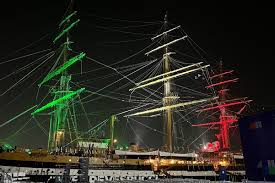There is no doubt that India needs investment, both domestic and foreign, because there are many gaps in infrastructure, education and health which only a higher rate of investment can fill. Statistics about domestic investment and capital formation are not encouraging and show a decline in the second quarter of 2015. India’s saving rate is also down from a peak rate of 38 percent to 31 percent.
Everyone watching the economy is worried about the slow rate of investment which is not forthcoming from the Indian corporate sector. Net profits in the second quarter of 2015-16 have remained flat at 0.05 per cent for the corporate sector. Except for pharmaceuticals, Fast Moving Consumer Goods and automobiles, companies are struggling to pay off debts. According to Standard & Poor 100 corporates had a debt of $300 billion in 2014.High interest payments towards paying back of corporate debt are cutting into their profits.
In Crisil’s 192 listed public and private sector companies, key sectors such as infrastructure, energy, metals, cement, automobiles, pharmaceuticals, and textiles, showed 4 per cent decline in Capital expenditure for 2015-16. For private sector companies the Capex plans declined even more by 11 per cent.
Corporate sector depends a lot on rural demand and there has been bad news on the agricultural front. Agricultural stress is still present and agricultural growth slid to 1.5 in April- June quarter. Rural demand is also dented because of falling wage growth due to three consecutive monsoon shocks.Slack demand is also due to low earnings from agricultural exports because of low commodity prices. Global commodity prices have fallen by nearly 17 per cent compared to last year.
Sales of the corporate sector have declined by 4 per cent. Due to low rural demand, there is piling up of inventories in factories and thus new investment by the owners is being stalled. According to RBI, factories are running 30 per cent below capacity. In ten out of 12 sectors, capacity utilization is at five year lows causing new project announcements to dry up.
One wonders why when there are 87 billionaires and 2.5 lakh dollar millionaires, investment is still not forthcoming in India? Prime Minister Modi seems more focused on foreign investors. Perhaps he wants to speed up fulfilling his dreams through foreign investment which is accompanied by knowhow and technology. Modi’s dream of ‘Make in India’ has taken off in principle but there are problems on the ground. In Make in India campaign, 25 areas have been listed and Modi wants to make India a new global manufacturing hub. But red tape, problems with availability of skilled labour, land acquisition, creaky infrastructure, mandatory clearances of various kinds and lack of clear exit laws, are holding back investors from coming forward. There are many start ups but in important areas, investment is lacking.
Manufacturing growth can be fuelled by a big rise in export demand. But exports are down for 11 consecutive months and have shrunk by 17.5 per cent. Exports will remain sluggish for the next one year because of the slowdown in global demand with world output growing only at 3 per cent. Demand from Europe is likely to remain low with terrorist threats and the influx of refugees. A lot of insecurity will remain in the minds of western Europeans. India’s manufacturing growth for September was only 2.6 per cent which is not high enough to create jobs for the one million job seekers per month.
In India, an important segment of demand for manufactures comes from the urban sector. But food costs are up mainly due to the phenomenal rise in price of Dal and other food items consequently inflation measured by Consumer Price Index is up at 5 Percent even though the wholesale price index is in the negative. The new cess on account of Modi’s Swatch Bharat project imposed on services which people will have to pay will cut into their budget for manufactured goods—consumer durables and fast moving consumer goods.
The access to credit will be critically important for manufacturing growth to pick up especially if India has to grow at 8 per cent as announced by the Prime Minister Modi in the G20 meeting in Turkey recently. But the Credit off take though it has improved will only increase if there is a further cut in the interest rate. It was low at 5 per cent and very low at 1.3 per cent for the industrial sector in August.
Banking sector’s health is very important for credit growth and investment. The RBI has to take care of recapitalization of public sector banks according to Basel III norms which will require huge amounts of money equivalent to 7 per cent of GDP.
Because of the corporate profit results being rather pale, FIIs have been moving out of equity in 2015 and have bought Rs 12,280 crore worth of debt instead because of the high rate of interest India is offering compared to the developed countries.
Modi wants Digital India but first the infrastructure for digital economy has to be laid out. India ranks 129 out of 166 countries regarding ICT development index. India is one of the least connected countries in the world. Yet India is making progress in rural e- commerce, e- hospitals, tele- medicines and online study for students. But such progress is few and far between. It is estimated that $11 billion is needed to connect with high speed interest grid to connect villages.
With Bihar election results tarnishing the ruling NDA’s clout, the parliament will be a hotbed of fiery debates and the opposition is likely to have a stronger voice. The pending bills on GST and Land Acquisition may not be passed as a result which will make Modi’s dreams difficult to realize in the short term even when he has introduced many reforms on the FDI front. When private investment is lacking, there has to be a surge in public investment and expenditure. The announced 25 per cent revision of salaries of government employees is aimed at giving a boost to demand for industry. Also the proposed reduction in corporate tax to 25 per cent may give a boost to investment.
(The writer is a Senior Fellow at Observer Research Foundation, Delhi)
Courtesy:ORF- Urgent need for investment
Author Profile
- India Writes Network (www.indiawrites.org) is an emerging think tank and a media-publishing company focused on international affairs & the India Story. Centre for Global India Insights is the research arm of India Writes Network. To subscribe to India and the World, write to editor@indiawrites.org. A venture of TGII Media Private Limited, a leading media, publishing and consultancy company, IWN has carved a niche for balanced and exhaustive reporting and analysis of international affairs. Eminent personalities, politicians, diplomats, authors, strategy gurus and news-makers have contributed to India Writes Network, as also “India and the World,” a magazine focused on global affairs.
Latest entries
 India and the WorldNovember 26, 2025G20@20: Africa’s Moment – The Once and Future World Order
India and the WorldNovember 26, 2025G20@20: Africa’s Moment – The Once and Future World Order DiplomacyOctober 4, 2025UNGA Resolution 2758 Must Not Be Distorted, One-China Principle Brooks No Challenge
DiplomacyOctober 4, 2025UNGA Resolution 2758 Must Not Be Distorted, One-China Principle Brooks No Challenge India and the WorldJuly 26, 2025MPs, diplomats laud Operation Sindoor, call for national unity to combat Pakistan-sponsored terror
India and the WorldJuly 26, 2025MPs, diplomats laud Operation Sindoor, call for national unity to combat Pakistan-sponsored terror India and the WorldJuly 25, 2025When Fire Ends, Diplomacy Begins
India and the WorldJuly 25, 2025When Fire Ends, Diplomacy Begins








